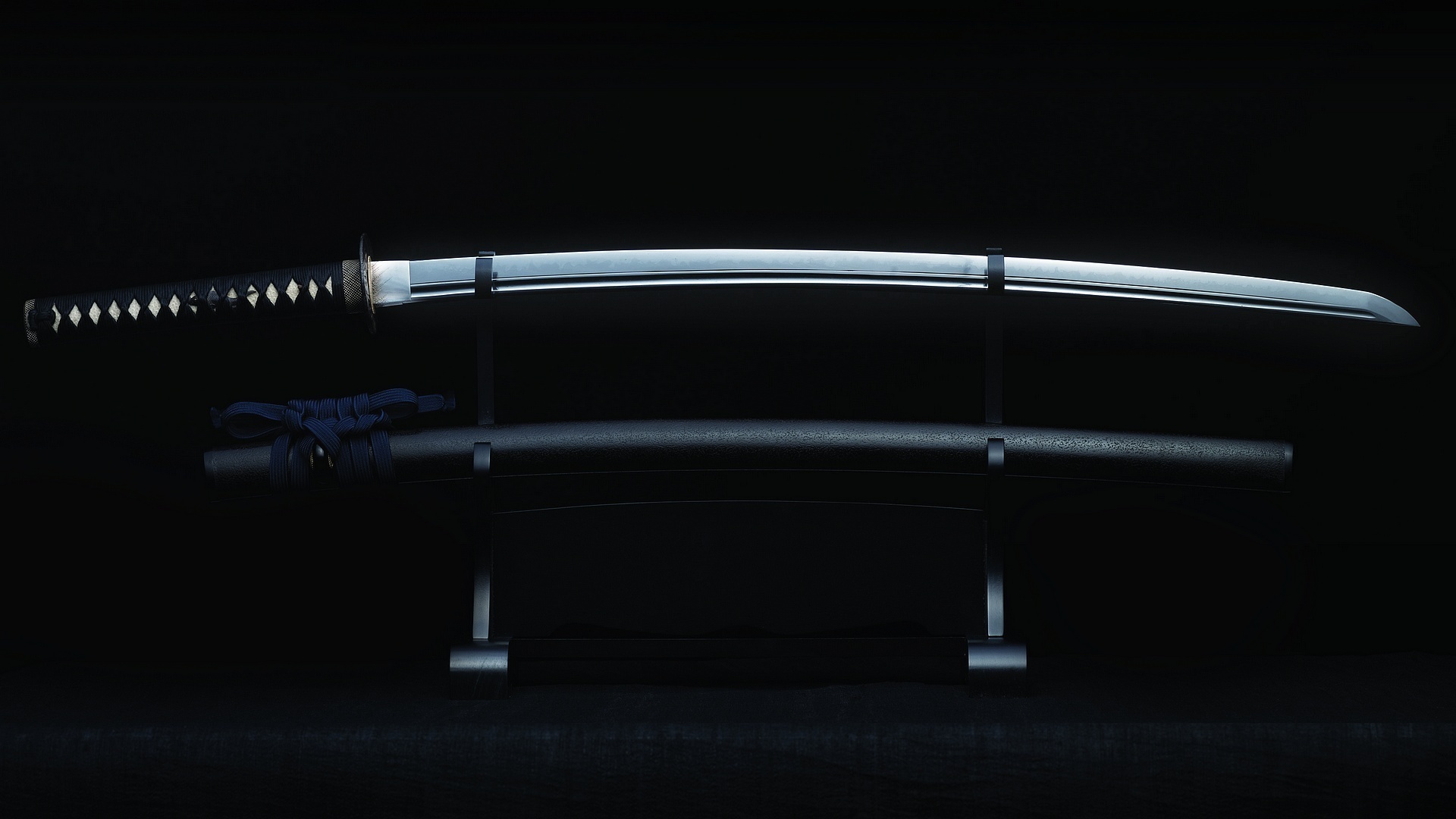Campioni della Community
Contenuto popolare
Showing content with the highest reputation on 20/05/2010 in tutte le aree
-
Faeris Stompy
1 pointIntroduzione Il Faerie Stompy è uno dei mazzi più anziani del legacy , ma nonostante questo è sempre stato un Tier1 e secondo me lo sarà ancora per molto tempo. Il mazzo nasce circa tre anni fa dalla mente di Jarno Porkka aka Eldariel. Lista Base - (Da cui partire) Lands 2 [MR] Seat of the Synod 8 [uNH] Island 4 [EX] City of Traitors 4 [TE] Ancient Tomb Creatures 4 [uL] Cloud of Faeries 4 [FD] Trinket Mage 2 [uL] Weatherseed Faeries 4 [AN] Serendib Efreet 4 [P2] Sea Drake Spells 4 [DS] Sword of Fire and Ice 1 [sOK] Pithing Needle 4 [MR] Chalice of the Void 4 [AL] Force of Will 3 [bOK] Umezawa's Jitte 4 [MR] Chrome Mox 1 [FD] Engineered Explosives 3 [MR] Thirst for Knowledge Sideboard SB: 4 [TE] Propaganda SB: 3 [uS] Back to Basics SB: 1 [TSB] Tormod's Crypt SB: 3 [MM] Misdirection SB: 3 [LRW] Sower of Temptation SB: 1 [sOK] Pithing Needle Analisi Carta per Carta - Main MANA 22 Spoiler: 4 City of Traitors 4 Ancient Tomb 4 Chrome Mox Sono i nostri acceleratori e come tali devo essere giocati nel migliore dei modi. non tenete mai una mano che non ne abbia almeno uno, a meno che non abbiate già mulligato pesantemente. 8 Island Essendo un mazzo mono Blu abbiamo bisogno di fonti di mana assolutamente stabili e a prova di slandi. 2 Seat of the Synod BESTIE 18 Spoiler: 4 Sea Drake 4 Serendib Efreet Sono i nostri assi. Ricordo che se di prima mano abbiamo un ‘Ancient Tomb e un Mox di Cromo non dobbiamo riprendere in mano la landa . E’ consigliabile non giocare nei primi due turni uno dei nostri bestioni se non sappiamo cosa gioca l’avversario, sarebbe meglio riuscire a giocare un Chalice of the Void. Un altro consiglio molto utile : L’Efreet è consigliabile giocarlo , quando giochiamo con mazzi a base rossa , prima del Sea Drake , questo perché ha 4 di costituzione e non muore da bolt. Un ultimo accorgimento : se giochiamo contro mazzi che sfruttano il bianco , prima di giocare un delle nostre creature è preferibile giocare un Chalice of the Void a 1 , in questo modo riusciamo a evitare istantanei fastidiosi come Da Spade a Spighe !. 4 Cloud of Faeries Insieme alle creature sopraccitate sono uno dei must del mazzo , ci permettono di fare delle giocate di primo turno a livello del T1. Se no dovessimo pescare nessuna delle nostre “Bestie” possiamo sempre equipaggiarli con una Sword of Fire and Ice o con l’ Umezawa's Jitte. Ricordiamo che se dovessimo avere in gioco un calice a 2 li possiamo anche ciclare. 4 Trinket Mage Sono i nostri tutori , ci permettono di andare a prendere “ la cosa giusta al momento giusto”. 2 Weatherseed Faeries EQUIPAGGIAMENTI 7 Spoiler: 4 Sword of Fire and Ice Qualsiasi creatura equipaggiata con la Sword diventa fortissima , permette di distruggere creature fastidiose 3 Umezawa's Jitte La Jitte ci permette di concludere il lavoro della spada , di solito la utilizzeremo per guadagnare vite perse con la Ancient Tomb o dando +4+4 alle nostre creature, ma non dimentichiamo che può dare anche -1-1 alle creature avversarie , su tutte Dark Confidant o Goblin Lakey. CARTE BLU 7 Spoiler: 4 Force of Will Anche se non siamo un mazzo di controllo avere un piccolo elemento di controllo non fa mai male 3 Thirst for Knowledge Sono il peschino più sinergico con il mazzo , non dovrebbe essere un problema scartare una carta artefatto , poiché il nostro deck è composto da 14 artefatti. TOOLBOX 6 Spoiler: 4 Chalice of the Void E’uno degli elementi principali del mazzo , ci permettono di mettere un pò di lock sin dal primo turno e di creare un grosso vantaggio carte in nostro favore, 1 Pithing Needle E’ l’unica carta antisinergica col calice , ma giocata in 1x non ci da grandi problemi. 1 Enginered Explosives Una lista aggiornata Lands: 2 Seat of the Synod 9 Island 4 City of Traitors 4 Ancient Tomb Creatures: 4 Cloud of Faeries 2 Trinket Mage 4 Serendib Efreet 4 Mulldrifter 4 Sea Drake 2 Sower of Temptation Spells: 2 Sword of Fire and Ice 2 Sword of Light and Shadow 2 Umezawa's Jitte 1 Pithing Needle 4 Chalice of the Void 4 Force of Will 4 Chrome Mox 2 Psionic Blast Sideboard: SB: 3 Silent Arbiter SB: 3 Back to Basics SB: 1 Tormod's Crypt SB: 3 Misdirection SB: 3 Weatherseed Faeries SB: 1 Pithing Needle Personalmente effettuerei questi cambiamenti: * -1 Pithing Needle, asinergico con Calice a 1 * +1 Trinket Mage, ci possono far cercare o calice o MOX veramente importanti! * -4 Mulldrifter +4 Pestermite *Riassunto: Spoiler: Lands: 2 Seat of the Synod 9 Island 4 City of Traitors 4 Ancient Tomb Creatures: 4 Cloud of Faeries 3 Trinket Mage 4 Serendib Efreet 4 Pestermite 4 Sea Drake 2 Sower of Temptation Spells: 2 Sword of Fire and Ice 2 Sword of Light and Shadow 2 Umezawa's Jitte 4 Chalice of the Void 4 Force of Will 4 Chrome Mox 2 Psionic Blast Come giocare il Mazzo Il mazzo sembra che , come ogni aggro , vada da solo e quindi sia facile da giocare , ma non è affatto così , uno giocata sbagliata , una Force lanciata male possono costarci la partita, quindi massima attenzione. Il mazzo punta ad avere già di primo turno due mana ( grazie ai full set di Ancient Tomb che di City of Traitors che di Chrome Mox ) in modo da riuscire a giocare Chalice a uno. E’ molto importante riuscire a capire quali sono le mani da mulligare e quali no . Generalmente le mani da mulligare sono quelle che non riescono a generare tre mana entro il secondo turno , ma poi dipende anche da che mazzo ci troviamo davanti. Conclusioni Spero di aver fatto una cosa carina aprendo un TOPIC con relativa lista di partenza e lista aggiornata su un gran bel deck nel formato Lecacy. Se ho sbagliato qualcosa mi scuso, nel caso contrario libero sfogo a commenti! :bye: EDIT: Ho creato questa discussione perché mi piacerebbe attivate questa sezione, non vorrei che resti una sezione del tipo "Bulding Deck" ma mi piacerebbe avere discussioni di questo tipo dove ci si può confrontate con le proprie opinioni riguardo a carte e tipologie del mazzo!1 point
-
Classi Psioniche (2)
1 pointEcco qua: Spoiler: Dirty Trick #1: Behold! Summary Through use of Polymorph any Object and Metamorphic Transfer, characters can qualify for Beholder Mage, a kickarse class. Ingredients * Beholder Mage (prestige class) [Lords of Madness, pg 42-44] * Polymorph any Object (spell) [Players Handbook, pg 263] * Beholder (creature) [Monster Manual, pg 25] * Metamorphic Transfer (feat) [Expanded Psionics Handbook, pg 48] The Trick The Beholder Mage has three tricky requirements to meet. Two are listed up front: the character must be a "true beholder," and must "put out central antimagic eye." Hidden in the Spells section, the third requirement surfaces: "whenever a beholder mage gains the ability to cast a new level of spells, it must sacrifice the use of its eye rays from one of its ten small eyestalks." The first is fairly simple. A "true beholder" is a racial distinction, differentiated from type, subtype, and even the "beholderkin" psuedotype. Normally, polymorph, alter self, and shapechange grant the "type" or "form" of a creature, but not race. However, Polymorph any Object spell is different. It says: In the above wording there is none of this "form of" crap -- one creature or object becomes another creature or object, a ruling specifically differentiated from the previous half-arsedness of polymorph/alter self. So, if we were to pick "true beholder" as our designated new creature type, the target (presumably a character wanting to get some Beholder Mage power) would change into a true beholder, race and all. Due to quirks of the spell, the new true beholder would retain previous class features and abilities, but would be no less the beholder for it. The second, "must put out central antimagic eye" has been a real stumbling block for people who previously considered entry into Beholder Mage. The trouble centers around the fact that while Polymorph any Object does grant the target a true central eye, the lack of supernatural abilities means that there is nothing formally "antimagic" about this semi-vestigial oculus. There are two ways to go about answering this problem -- one is to say that "central antimagic eye" refers to the eye commonly known for its antimagic properties, and thus "antimagic" is just an extra clarifier term since the phrase "central antimagic eye" literally never appears as-is anywhere else in any 3.5 book. According to this school of thought, poking out the vestigial central eye should be enough to count. I don't buy it. It would be a tough sell at best, especially to a potentially hard-line DM or RAW Lawyer. The other way of thinking about the matter is to identify "antimagic central eye" with the eye from with the "Antimagic Cone" supernatural ability of true beholders is emitted. Thus, to give up such an antimagic ability, one must possess it in the first place. This is where Metamorphic Transfer comes in. This nifty feat actually lets you "gain" a supernatural ability from the powers of a creature that you shapechange into. The uses of said ability are limited, but what is important is the gaining, or possession of the ability, not the exercise thereof. Thus, the antimagic cone (su) ability can be obtained at the price of one feat, and can be then sacrificed for the greater good. Once we're familiar with Metamorphic Transfer, the third issue, eye-ray-to-spell-stalk conversion matter falls into place quite nicely. As it turns out, all of the eye rays are listed as a single supernatural ability, "Eye Rays (su)" in the descriptive text and the stats block for the True Beholder, and can be thus snagged in one fell swoop with a single Metamorphic Transfer. I know some people may be saying, "hey, but the rays can do different things, aren't they individual powers?" The answer is typical D&D rules quirkiness -- by all measurable standards of power-identification (grouped listing in the statistics block for supernatural abilities, a single descriptive text header with (su) identifier, non-distinctive power listing, etc), the disparate capabilities of a Beholder's little eyes are technically all part of one single supernatural capability. One psionic feat later, you have the use of eye-rays to sacrifice, and your Beholder-Mage is set for liftoff! The Possibilities Making It Work So, how soon can we slide into the Beholder Mage Class? Assuming that the character has 17 Int or higher a single application of Polymorph Any Object is can be permanent. Whether through Use Magic Device'ing a scroll (3,000 gp) or paying up for NPC spellcasting (1,200 gp), Beholderification should be available around 4th level for the average PC by DMG wealth standards. Metamorphic Transfer is a slightly slower matter -- the "manifester level 5th" requirement means that obtaining it twice will have to wait until 5th or 6th level, taking advantage of a Psion/Psychic Warrior's 5th level bonus feat and the usual 6th level freebie. Of course, obtaining the prerequisite supernatural abilities could be accomplished through Shapechange or Master of Many Forms, but these options are generally slower and more time-sensitive than the aforementioned options. Double Your Pleasure So, now you're a Beholder Mage. Enjoy gaining a new level of available spells every time you advance. Have fun advancing in caster level twice as fast as everyone else. Spontaneous casting from an unlimited spell list? To put it colloquially, "Daaaaaang." Decuple Your Fun Did I forget to mention that you can cast 10 spells a round... all as free actions? Let that one brew for a while, then treat yourself to the first build opportunity ever to grant 9th-level arcane spellcasting and 9th level manifesting, simultaneously. Sample Builds * PsiArcane Abomination: Psion 9/Beholder Mage 2/Cerebremancer 8/XYZ 1 * Monstrous Ur-Theurge: Psychic Warrior 5/XYZ 1/Beholder Mage 2/Ur-Priest 2/Mystic Theurge 8/XYZ 2 * Pure EyeMage: Psion 6/Beholder Mage 2/Cerebremancer 1/Incantrix 10/XYZ 1 * Dedicated Beholderform Caster: Psion 6/Beholder Mage 2/Cerebremancer 2/Master Transmogrifist 101 point
-
...e se il tuo pg non ti diverte più ???
Bella domanda, solo una volta mi sono infognato in un PG che non faceva per me, per fortuna o purtroppo tutto il party morì contro un terrasque, e ora stò lavorando a un nuovo PG.. Il mio consiglio è, che se non vuoi rinunciare al guerriero, prova a renderlo parzialmente incantatore, come ad esempio un'incanta spade, ma non ti voglio forzare alla scelta di una CdP, in pratica invece di buttare via il PG prova a ibridarlo, o metti anche caso che un multiclassaggio ora sia infattibile, potresti rifarti il PG in modo che resti un picchioche ma che usufruisca comunque del potere arcano, come appunto l'incantaspade o un sacerdote guerriero o un'adepto della stella verde..1 point
-
Cerco/Non Trovo/Esiste? (4)
1 pointEsatto, per altri oggetti magici che garantiscano talenti, guarda qui: http://community.wizards.com/go/thread/view/75882/19871950/Items_that_Grant_Feats1 point
-
i poteri razziali.... poteri ad incontro
Giusto per chiarire: puo' farlo. Puo' anche farli nello stesso turno perche' sono due azioni diverse (movimento e standard rispettivamente) e in ogni turno puo' fare tre azioni, una standard, una di movimento e una minore. Passo Fatato e' un potere a incontro a tutti gli effetti. Questo significa che puo' usare QUEL potere una volta e poi non lo puo' usare fino a che non fa un "riposo breve" (da 5 minuti), ma se ha altri poteri a incontro li puo' usare benissimo. "A incontro" e' solo la FREQUENZA d'uso di ciascun potere. Stesso discorso per i giornalieri (solo che per recuperarli occorre il "riposo esteso", ovvero la classica nottata di sonno). Al 1° livello ne conosci solo uno (piu' eventuali razziali...) ma col passare del tempo aumentano!1 point
-
Creare un'ambientazione
1 pointConcordo con Ji ji, per uno come me, che lascia i giocatori di decidere tutte le loro mosse (per quanto pazze siano...ma piano piano sempre meno), è necessario creare un mondo coerente. uno dei bardi dell'ultima campagna ha messo su un complicato giro d'affari di opere d'arte, e ha voluto molte informazioni (in fondo ci buttava piu' di 10.000 MO!), ed io, da bravo DM (dicono loro, bravo) ho dovuto lavorarci su! Un altro voleva sposarsi, solo che nel regno è complicato sposare degli stranieri (i PG), e quindi sono saltate fuori delle leggi di vario tipo, che alla fine hanno superato. Si sono così affezionati ai PG che quando uno di loro è morto, gli hanno preparato un funerale con i fiocchi, e io, al momento di dare i Pe, mi sono sentito rispondere all'affermazione "visto come avete agito per il funerale (lacrime, nano che si trappa la barba, ecc...) vi do X PE..." e loro "perchè...non è normale fare così in questo paese (fantasy)? Via al divertimento! E' necessario, con le ambientazioni (spece quelle publicate...perchè non sono tue), creare un minomo di coerenza, storia e nozioni generali, altrimenti diviene solo "entrola porta è chiusa? la fondo, poi entro, ammazzo il mago/drago/vampiro cattivo e libero la principessa". Certo, c'è ha chi piace, ma a me, fondamentalmente no, quindi sono preciso!1 point
-
Combat style
1 pointSia il Lesser che il Greater sono talenti. Quindi per avere il greater devi spendere 2 talenti essendo il lesser un prerequisito. Puoi si inoltre avere quanti lesser/greater combat style feats vuoi, però 1 attacco può sempre e solo beneficiare dei bonus di un singolo Combat Style. Quidi se hai due combat style che modificano lo stesso potere prima di usarlo devi annunciare quale combat style applichi e solo i benefici di quello contano.1 point
-
Imposizioni delle mani
1 pointSe hai il manuale in italiano purtroppo la riga del bersaglio è saltata. Il bersaglio dell'imposizione delle mani è Una creatura, e come tale può essere effettuata su tutti, alleati, nemici e il paladino stesso.1 point
This leaderboard is set to Rome/GMT+02:00










